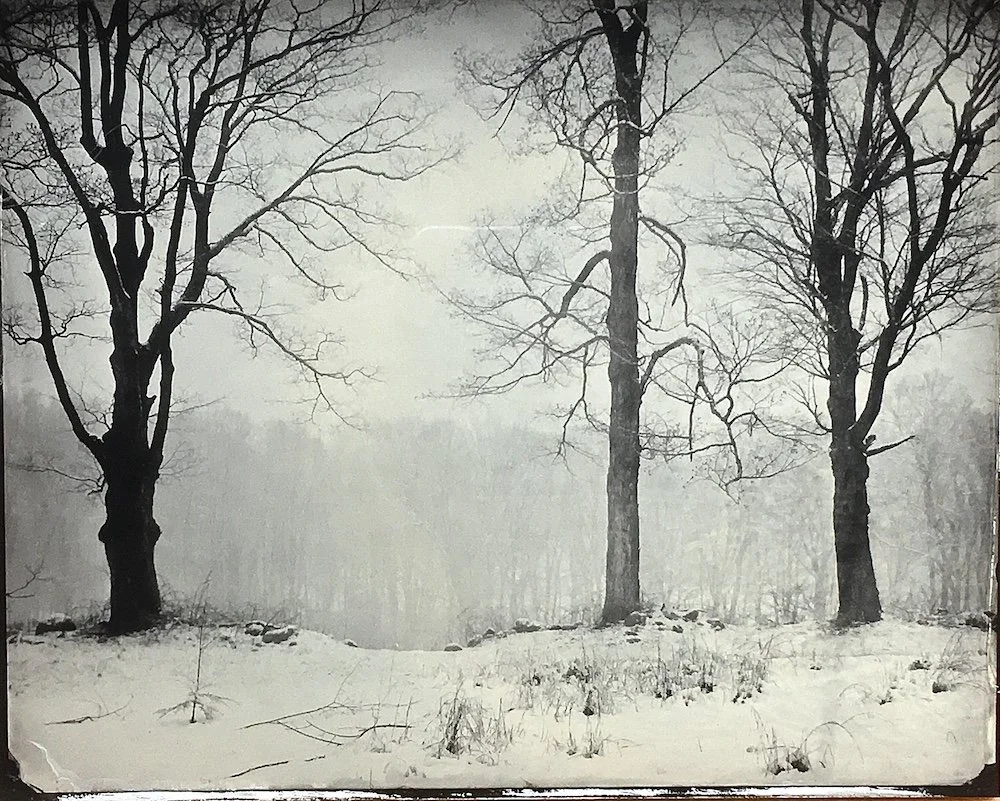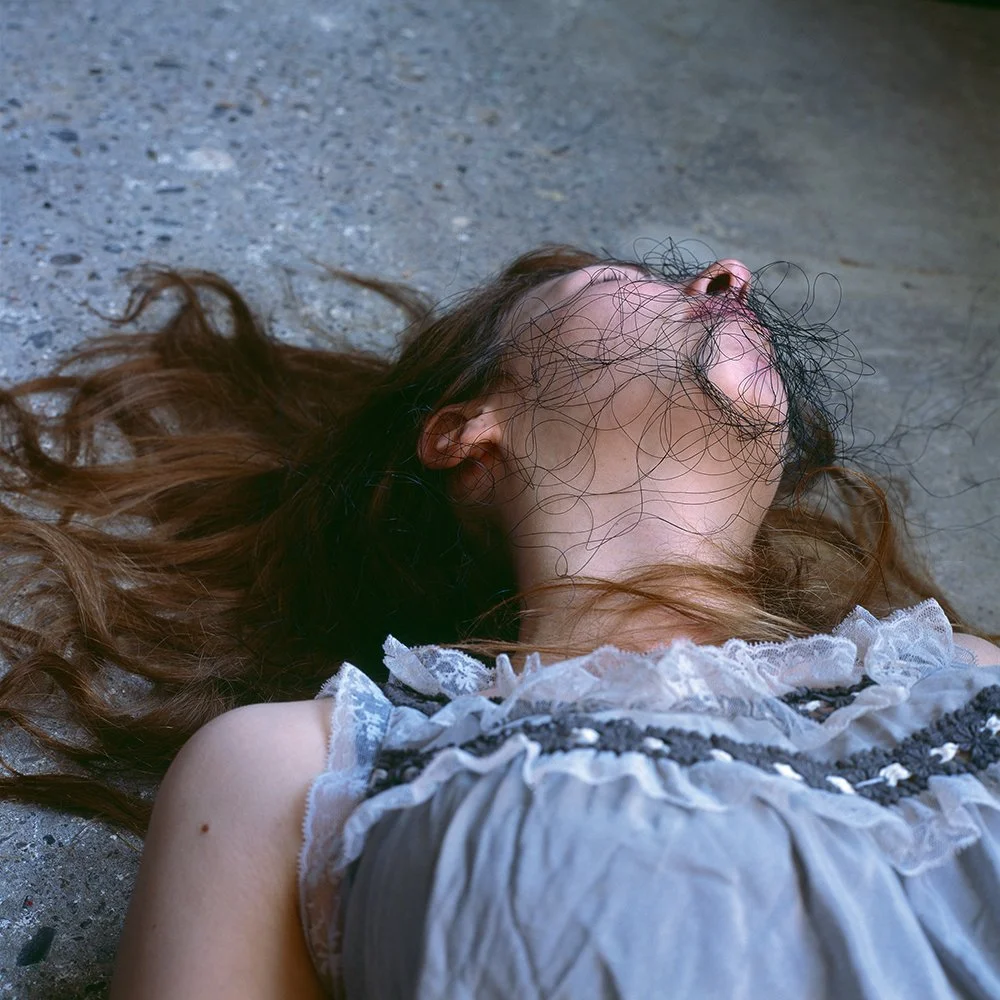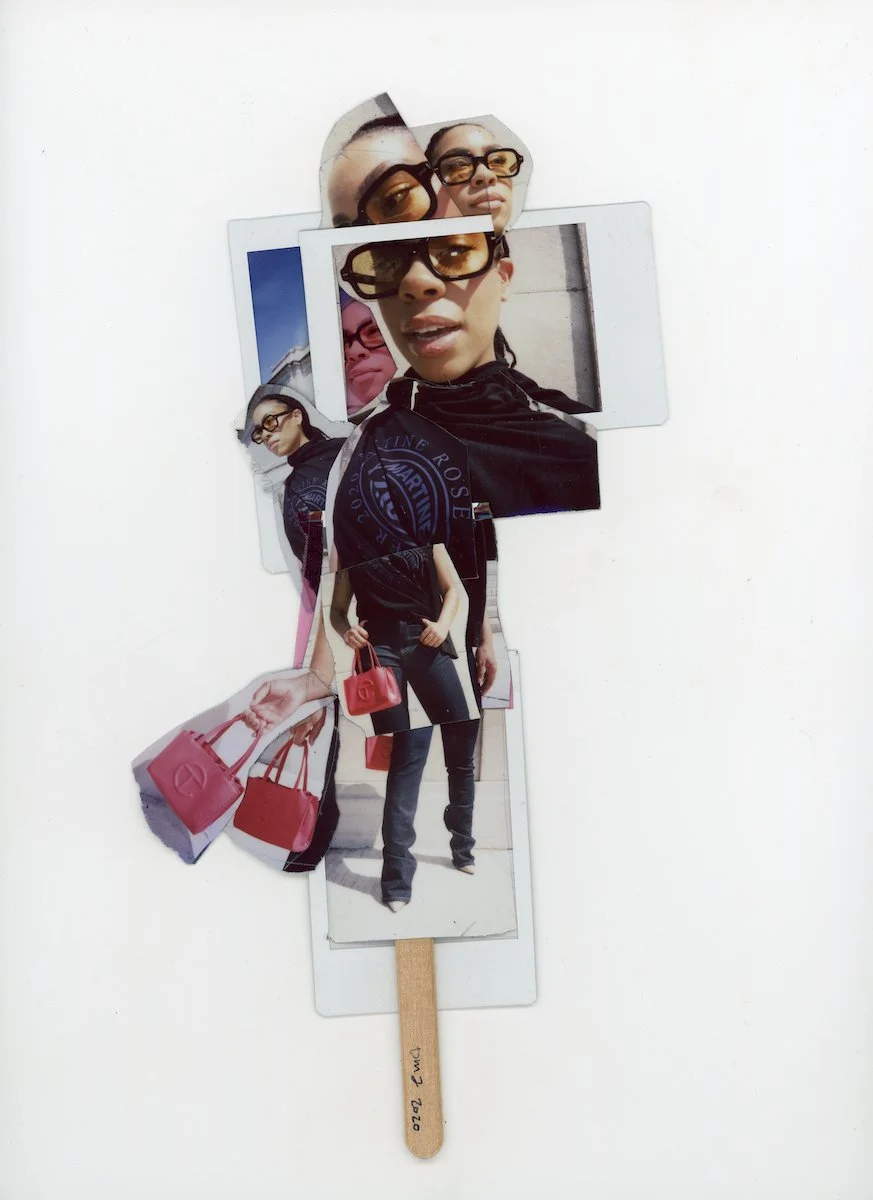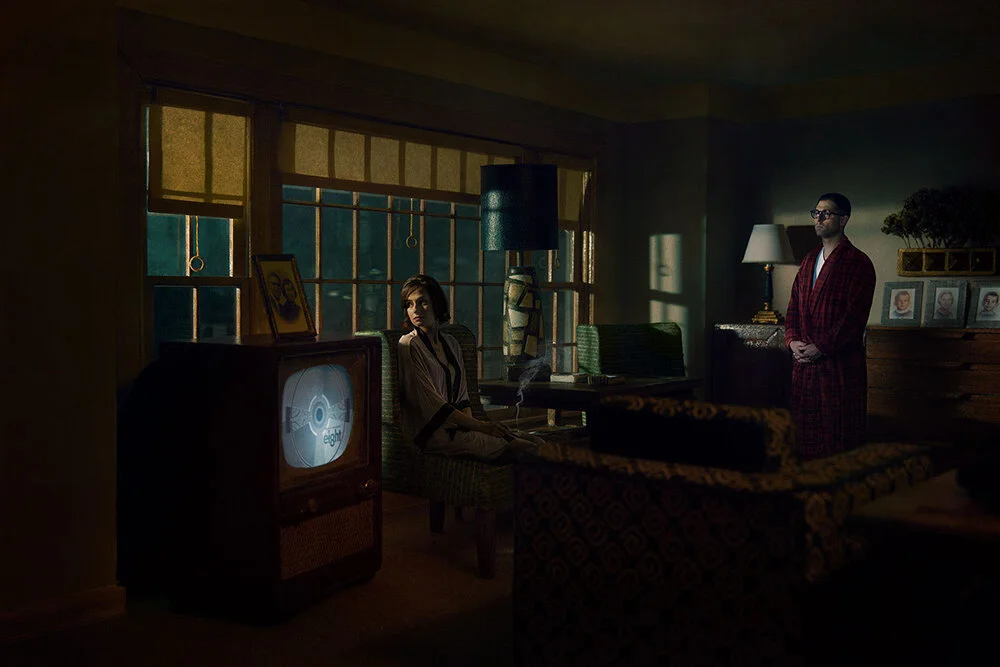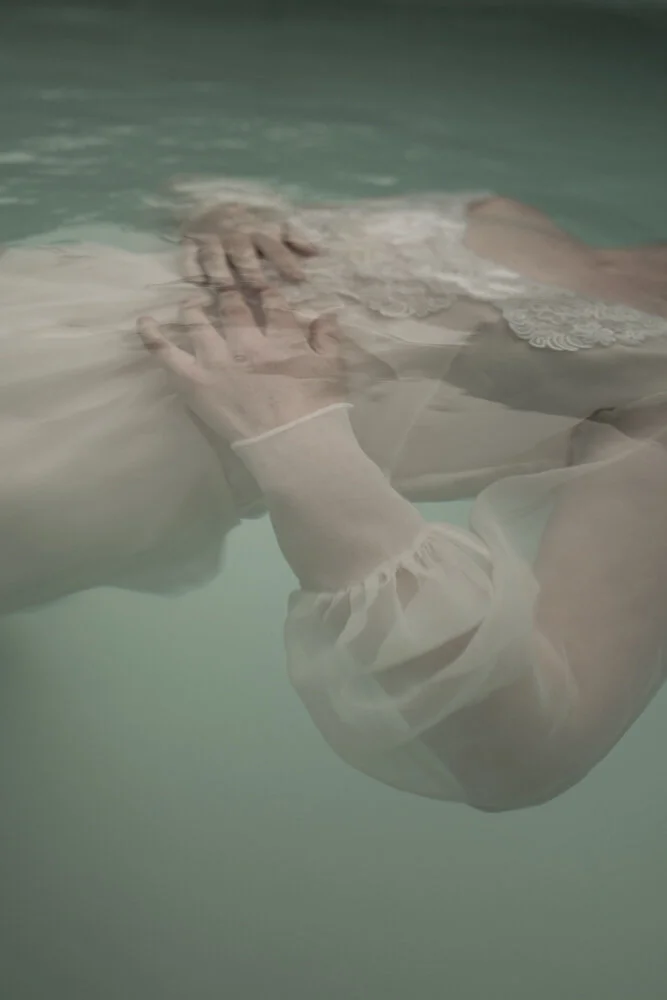"Beauty has become such an unfashionable word in art, so I hesitate to say this, but really there is no other answer: I'm looking for beauty, I want to participate in beauty, I want to share it with the world. It's not necessarily a romantic beauty that I'm looking for — it's about feeling an emotional connection with forces that are greater than us like nature or time, even destruction."
Read MoreIn a similar though more dire mindset than historian Coffin, Eder said, "The reef was forged in the crucible of climate change, and its existence is threatened by it now. The urgency of my documentation is heightened by the fact that at present rates of rising temperatures, and given the occurrence of increasingly violent storms, the reef could disappear beneath the ocean waves in a shockingly short time, leaving the mainland unprotected and hundreds of bird species without nesting areas."
Read MoreTo me, Kumi's works are a combination of sensual and tragic. The photographs are often disquieting due to her intentional use of this dichotomy. The thread winding through them is the inability of the viewer to see the faces of her models. There is attention to small detail while at the same time, she limits the specific information she wants us to see. She leaves it to her viewers to interpret the work through their cultural touchstones and imaginations.
Read MoreHer working process is something she calls 'mindless creativity.' She allows the pieces to evolve intuitively, not knowing what the result may become. Divine says that she pushes beyond what she knows and allows the magic to happen by working with the images and allowing them to speak. "Characters" (for lack of a better word) emerge, and some get replaced or left behind. Eventually, the story unfolds and becomes clear to her, all via a process of semi-controlled intuitive play. One symbol may dictate some of the others as the point of the work emerges from Divine's subconscious.
Read MoreMany tree-loving photographers manifest their adoration by making photographs of trees. I’m not someone who is quickly captivated by images of trees. I mean, sure, I like them. They are often pretty, and in their way, can be comforting as a substitute for actually being out in the world of nature. If climate makes communing with a tree challenging - due to weather or simply scarcity, as in a desert or a city of skyscrapers - then the image has even greater importance. Then there are images of trees that seek to cause us to take action urgently or we will leave our children and grandchildren an unliveable planet without trees or natural vegetation.
But Olson’s work doesn’t fit neatly into either of these boxes. She uses her photographs of trees to create 3-d, sculptural objects. They are not simply a clever manner of displaying the imagery; they are part and parcel of the conceptual underpinning of this work. Now, that hugely gets my attention!
Read More"I have spent the past year researching and uncovering suppressed images of Black women held in photographic collections at the Art Institute of Chicago. The images I have found and researched thus far depict the exploitation and violence towards Black women. I excavated, re-photographed, re-captioned, and re-contextualized the original works. By engaging with these images with the intervention of my hands and my body, I rescue and protect Black women's bodies and their humanity so that they can be seen and heard. With my ongoing body of work entitled Our Mothers' Gardens, I beg for more than the visibility of Black women in institutional collections and restorative justice. I also desire for the issue around institutions holding and silencing collections of visible and (in)visible violent visual depictions of Black women to be further highlighted." -Alayna Pernell
Read MoreAnyone who has seen Susan's work knows that she has concentrated on topics that typically affect someone later in life, all seen through a veil of sensitivity and love. In particular, her self-portraits deal with aging and acceptance as subject matter. Like many of us, the pandemic changed her lifestyle. In Rosenberg Jones' case, she turned the camera on herself as she and her husband were locked down in their high-rise NYC apartment. She told me, "Michelle Obama described a 'mild depression' which I understood completely. As the pandemic, toxic political and social climate, and general quality of life presented a troublesome reality, I continued to make these photographs into 2021. Anxiety about aging and isolation remains, albeit with some hope for the future mixed in."
For this image, she sat in her living room in her mother's antique chair, holding a prized painted teacup, and imagined herself having afternoon tea. She said, "When I viewed the image, I thought it to be a statement about memory, precious objects, body language, and aging."
Read MoreAsked about Spike Waves itself, Debe told me that although David is non-verbal, he still communicates via various mannerisms. “That particular day, David refused his medicine by turning away from Lori." (It seems that's quite a conundrum for Lori, because David requires the medication.) Debe also stated, "Six months after making the photo of David, I saw the fern. It reminded me of brain activity. But wasn't until I edited this image, accenting the shape of his headless body, that I saw the matching of organic shapes of the fern, his scoliotic curve and protruding ribs."
Read MoreAsked about this image, she told me, "My project involves creating miniature portraits with instant film. I analyze the personality of each individual before photographing them. I use a pack of Fujifilm Instax Mini to photograph different elements of the person that I think best represents their personality. I may also photograph a particular style to capture them as well. After I take the photographs, I spend time piecing each photograph together into a single piece of work. Using the Instax Mini allowed the project to gain more depth. It adds physical elements that people can touch. I varied the distance for each frame to create a layered effect."
Read MoreToday, I'm focusing on process. Greg Banks does one of my most favorite things a photographer can do: combine digital work with alternative and hand processes. But he goes it one better than that. He's combining iPhone photography with iPhone app painting and drawing on the images, then printing them using traditional media in a most untraditional way.
Read MoreWhat attracted me to Wentland's portfolio and this specific image is simple: speaking as a Hawai'i resident, this image sings Hawai'i. The palm leaf and the unique quality of the light imbue the image with a sense of place, this place. His son resembles how my son looked when he was young, and like so many other children here in the islands who are hapa, or mixed race. If you know this place well, you immediately recognize this as a picture of every keikikane (boy) as well as of our Hawaiian islands. In effect, it's an environmental portrait sans environment.
Read MoreI have lost three of my five siblings via unexpected and traumatic deaths: one by drowning and two by suicide.
As a result I use my photography to help make sense of the relationships we had, what we knew about each other, and what we didn’t.
~ Lea Murphy
Read MoreWhile some of her images lean towards the style and themes of Francesca Woodman, there is a quality to Acford's work that reminds me of Kumi Oguro's. Their subject matter and outward styles are markedly different, but both similarly use the trope of ambiguity. I'm specifically referring to how both utilize indeterminate space, the hidden faces, and a heightened sense of tension or danger.
Read MoreSeaton says she aspires to show joy, but I think she did one better. She evoked joy from within me, unearthing memories that rarely bubble to the surface. She brought out my inner child and had me reliving those long summer days full of endless potential.
Read MoreWelcome to no. 40 in our series Poignant Pics where our editor, Diana Nicholette Jeon, writes about Aimee B. Mccrory's hauntingly beautiful image, The Ghost Chair.
“The image is beautiful but haunted, and it has a human presence even in the absence of people. The dress, surrounded by the swirling mist, is as forlorn as if it were an aging beauty queen. Like an elegy honors a person, it is reverent to the crumpled and torn dress.”
Read MorePart of Richard Tuschman's new series, My Childhood Reimagined, Television Test Pattern delves backward into an era before iPhones, 24-hour cable, and 75" slimline TVs. It's imbued with the same exquisite Vermeer and Hopper-esque lighting that is a signature of his work and evokes the overarching melancholy of his Once Upon a Time in Kazimierz series. Although beautiful and superbly lit, there is a distinct psychological resonance. A sense of disconnection and longing pervades the image.
Read MoreContinuing in the vein from last week's article, I love work that makes me FEEL, and I don't believe it is possible to do this without the photographer bringing their own emotions to their work. Lara Gilks’ photography definitely makes me feel, often in a disquieted manner.
Read MoreOn Mark Walton’s “Bleed for Me”…
Arnold Newman said, "A lot of photographers think that if they buy a better camera, they'll be able to take better photographs. A better camera won't do a thing for you if you don't have anything in your head or in your heart." Remember that "messiness" seeming intentional I mentioned earlier? Mark Walton created this image by scanning the backside of BW Fuji instant film on a Polaroid, which is made of paper and usually tossed out. The qualities that this process both imposed AND degraded do help to point to the image's intent, in my opinion.
I hope this image made you feel. And maybe think, too. Bravo Mark! It's an image both beautiful and curious.
Read More“Regardless of our station in society, many of us, perhaps more so those in the arts, believed that American life under a Trump presidency would not be positive. Had I seen the original series, My Silent Witness, more contemporaneously, I KNOW I would have felt it perfectly expressed how many of us experienced the politics of that time.
The series was a collaboration between the photographer and her “sitters.” Those photographed used props and gestures while Donna used her lens, together making images that invited the viewer to think deeply about what the sitter felt and why. She intended to give voice to those feeling invisible and unrepresented, to entice viewers to consider their humanity and views.”
Read MoreOur editor Diana Nicholette Jeon writes about Sarah Bultitude’s photograph, Burnish.
Read More
